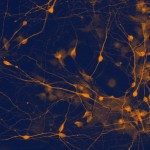Lien vers Pubmed [PMID] – 9207794
Nat. Genet. 1997 Jul;16(3):277-82
The genome of the yeast Saccharomyces cerevisiae is now completely sequenced. Despite successful genetic work in recent years, 60% of yeast genes have no assigned function and half of those encode putative proteins without any homology with known proteins. Genetic analyses, such as suppressor or synthetic lethal screens, have suggested many functional links between gene products, some of which have been confirmed by biochemical means. Altogether, these approaches have led to a fairly extensive knowledge of defined biochemical pathways. However, the integration of these pathways against the background of complexity in a living cell remains to be accomplished. The two-hybrid method applied to the yeast genome might allow the characterization to the network of interactions between yeast proteins, leading to a better understanding of cellular functions. Such an analysis has been performed for the bacteriophage T7 genome that encodes 55 proteins and for Drosophila cell cycle regulators. However, the currently available two-hybrid methodology is not suitable for a large-scale project without specific methodological improvements In particular, the exhaustivity and selectivity of the screens must first be greatly improved. We constructed a new yeast genomic library and developed a highly selective two-hybrid procedure adapted for exhaustive screens of the yeast genome. For each bait we selected a limited set of interacting preys that we classified in categories of distinct heuristic values. Taking into account this classification, new baits were chosen among preys and, in turn, used for second-round screens. Repeating this procedure several times led to the characterization of the network of interactions. Using known pre-mRNA splicing factors as initial baits, we were able to characterize new interactions between known splicing factors, identify new yeast splicing factors, including homologues of human SF1 and SAP49, and reveal novel potential functional links between cellular pathways. Using different cellular pathways as anchor points, this novel strategy allows us to envision the building of an interaction map of the yeast proteome. In addition, this two-hybrid strategy could be applied to other genomes and might help to resolve the human protein linkage map.

